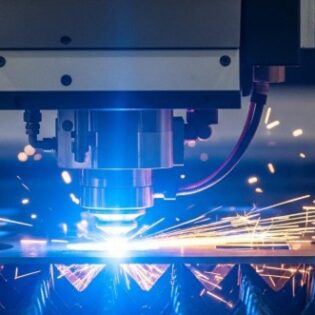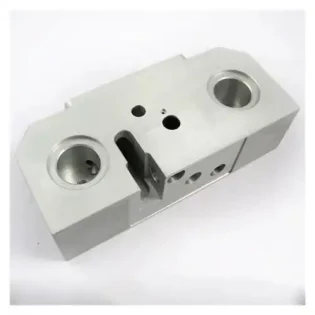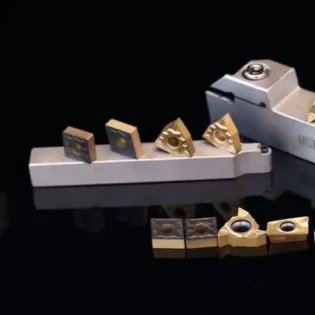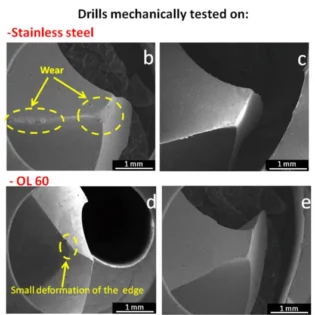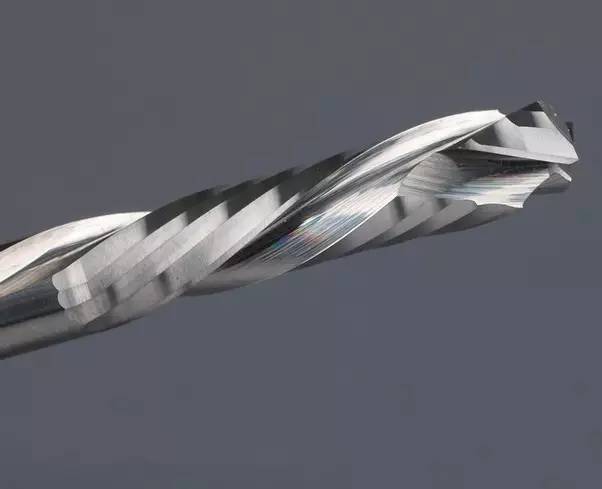
Development of High-Grade Carbide?Tools
China has become the world’s manufacturing center and the largest market for cutting tools. During the 11th Five-Year Plan, domestic tools accounted for over 65% of the market share, but these products primarily fall in the mid to low-end categories, necessitating significant imports of high-grade tools. In 2010, China’s tool consumption was about 33 billion yuan, with approximately 11 billion yuan spent on imported high-grade tools, while domestically developed high-grade tools accounted for only about 1 billion yuan in sales. This situation results in a significant consumption of tungsten resources with low added value.
Developing high-grade carbide?tools is crucial for reducing tungsten resource consumption and promoting sustainable development. For example, indexable CNC blades not only inherit the features of high-end solid carbide?tools but also showcase integration in design and manufacturing, excellent chip-breaking designs, and diverse coating options. Compared to solid carbides, indexable blades significantly increase material utilization; for instance, Seco’s DOUBLE OCTOMILL? has 16 cutting edges, while Iscar’s H400 olive-shaped blade can be used over 10 times.
Improving the Utilization of Carbide?Tool Materials
Cutting tools often show minimal wear when they reach normal wear standards; directly classifying these tools as waste leads to significant tungsten resource wastage. Advanced regrinding and recoating technologies can remanufacture such tools, allowing them to maintain cutting performance multiple times and thus improving the utilization of carbide?tool materials.
Regrinding of carbide?tools involves classifying regrindable tools based on the extent of edge damage, determining suitable regrinding plans, and completing the process through rough grinding, fine grinding, and edge reinforcement. After rough and fine grinding, the cutting edge may have defects like micro-chipping and micro-cracking. Appropriate edge reinforcement methods can eliminate these defects, increasing edge strength and tool lifespan. Regrinded tools can also be coated again as needed.
Due to the standardized and modular nature of indexable blades, the regrinding process can also be standardized. Table 1 outlines the main regrinding processes and characteristics for indexable blades. After proper regrinding and recoating, the cutting performance of carbide?tools during rough machining is about 50% to 80% of new tools, while during finishing, it is about 85% to 90%. Through advanced regrinding and recoating technologies, carbide?tools can repeatedly demonstrate their cutting performance, thus enhancing material utilization and reducing tungsten resource consumption.
Table 1: Main Regrinding Processes and Characteristics of Indexable Inserts
| Regrinding Process Name |
Regrinded Blade Type |
Principle |
Advantages | Disadvantages |
| Local Regrinding | Same Model Blades | Observe worn areas of old blades for local regrinding | Simple method, low cost | Cannot completely eliminate original damage and wear marks |
| Small Specification Regrinding | Similar Small Specification Blades | Regrind old blades partially or completely, reduce size, convert to similar small specification blades | Remains standard size after regrinding, can be installed on standard tool holders, effectively eliminates original wear and damage marks | Large amount of regrinding required |
| Modified Regrinding | Modified Blades | Regrind blades partially or completely, change the shape and size for other purposes | Relatively simple process, low cost | Cannot completely eliminate original damage and wear, lower lifespan |
| Fixed Position Regrinding | — | Grind specific areas of old blades into one or more shapes to improve cutting edges | Fixed positioning, high interchangeability, provides specific shapes and sharp cutting edges | Proprietary design |
Recycling and Utilization of Carbide?Tool Materials
Tungsten resources in tungsten ore are primary, non-renewable resources, while tungsten resources in carbide?tool materials are secondary, renewable resources. As the supply of tungsten resources becomes increasingly tight, awareness of recycling tungsten resources from old carbide?tools is growing. Currently, the main methods for recycling tungsten resources from carbide?tool materials include melting, mechanical crushing, and electrolytic methods, with melting methods encompassing both niter and zinc melting methods. Zinc melting and electrolytic methods are currently the most widely used. Table 2 outlines the main methods and characteristics for recycling tungsten resources in carbide?materials. Additionally, other methods for recycling tungsten resources in carbides include high-temperature treatment and acid leaching.
Table 2: Main Methods and Characteristics of Tungsten Resource Recovery in Hard Alloy Materials
| Method Name | Recovery Principle | Advantages | Disadvantages |
| Niter Method | Melt waste materials and niter at 900–1200°C, then immerse in water; tungsten enters solution as Na?WO?, then WO? or APT is produced from the solution; cobalt remains in the residue for recovery | Early application, wide adaptability, low investment, fast reaction | Long process, low recovery rate, high cost, environmental pollution |
| Zinc Melting Method | At high temperatures, zinc forms a zinc-cobalt alloy with cobalt in carbides, causing the phase to expand; zinc is removed by vacuum distillation, resulting in a porous body, which is then crushed and milled to obtain tungsten-cobalt mixed powder | Widely used, relatively mature, short process, tungsten recovery rate reaches 95% | Product performance is low, high production costs and energy consumption |
| Mechanical Crushing Method | Clean the surface of carbide?waste, then mechanically crush and mill to obtain a carbide?mixture | Short process, low cost, high efficiency, low energy consumption | Requires special equipment and technology |
| Electrolytic Method | Use waste carbide?as the anode; by controlling the anode potential, cobalt is selectively dissolved into the electrolyte, then treated chemically to produce cobalt oxide; tungsten carbide is produced as anode sludge, which can be deoxidized to obtain tungsten carbide powder | Simple process, low cost, high efficiency, low labor intensity, minimal pollution | Generally suitable for waste with cobalt content greater than 8% |
Foreign tool companies have long conducted research and application work on the recycling of worn carbide?tool materials. Sandvik Tooling has launched a recycling initiative aimed at recovering and reusing worn carbide?blades and solid carbide?tools. Reports indicate that approximately one-third of Sandvik’s carbide?products come from recycled materials each year. Similarly, Hitachi Tools in Japan is actively promoting the recycling of worn carbide?materials nationwide.
As a major consumer of carbide?tools, China has the potential to create favorable conditions for the recycling of tungsten resources. While many domestic companies, such as Heyuan Fuma carbide?Co., Ltd. and Xiamen Jinlu Special Alloy Co., Ltd., have begun recycling carbide?tool materials, overall awareness of tungsten resource recycling remains low, with a relatively low recycling rate and the quality of recycled tungsten resources needing further improvement.
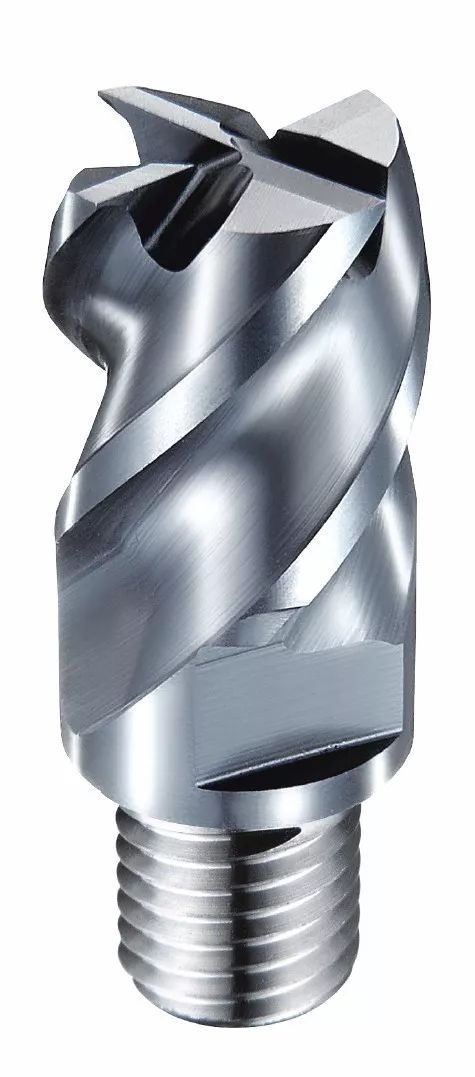
Research and Development of New Carbide?Tool Materials
With the continuous emergence of new processing materials and technologies, new tool materials are also being developed. The research of carbide?tool materials with lower tungsten content plays a positive role in the conservation and sustainable development of tungsten resources. Currently, steel-bonded carbide?materials and functionally graded carbide?materials are two major research hotspots.
Steel-bonded carbide?is a new type of carbide?material developed in recent years. It consists of one or more carbides (such as TiC, WC) as the hard phase (about 30% to 50% content) and high-speed steel or alloy steel as the bonding phase, made through powder metallurgy. Steel-bonded carbides inherit the advantages of both carbides and steel, offering high hardness and wear resistance while also providing high strength, ductility, and weldability typical of steel. This material fills the gap between the two. Steel-bonded carbides can be used to manufacture complex tools like drill bits, milling cutters, pull tools, and hob cutters, showing significant effects in machining stainless steel, heat-resistant steel, and non-ferrous alloys.
Functionally graded carbide?materials are also a hot research topic globally and represent the future direction of modern carbides. These materials exhibit a systematic and uneven distribution of chemical composition across different sections, utilizing compositional gradients to endow different parts of the material with varying properties. This helps to resolve the inherent conflict between hardness and toughness in carbides, resulting in superior comprehensive performance.
The application of steel-bonded carbide?materials and functionally graded carbide?materials in tool fields has achieved remarkable results. For instance, the “Christmas tree” milling cutter used for machining turbine rotor grooves is made of steel-bonded carbide. Sandvik’s functionally graded carbide?materials have been widely used in products such as coating blades and mining alloys, which operate under very harsh conditions. Although China has researched steel-bonded carbide?and functionally graded carbide?materials for over a decade, breakthroughs in core technologies and equipment are still needed, making this a focus for future research.
Promotion of Other Tool Materials
Despite the strong versatility and broad applicability of carbide?tools, no universal tool exists; each type of tool material has its limitations. Promoting the use of other tool materials in their respective fields can reduce dependence on and excessive use of carbide?tools, contributing positively to the sustainable development of tungsten resources in the carbide?tool industry.
In addition to carbide?materials, other tool materials include high-speed steel, ceramic tools, and superhard materials. High-speed steel, especially high-performance powder metallurgy high-speed steel, remains important in complex forming tools; ceramic tools excel in machining cast iron and hardened steel; diamond PCD tools show clear advantages in processing non-ferrous metals and non-metallic materials; PCBN tools are primarily used for machining steel and cast iron materials.
Foreign tool application companies are far ahead of China in the use of other tool materials. For example, GE in the U.S. has achieved milling speeds of 4000 m/min when using PCD face mills on aluminum engine cylinder heads.? In recent years, the development of foreign ceramic tools has been particularly rapid; Sandvik has achieved significant success with whisker and alumina ceramic tools in high-feed turning and milling of high-temperature alloys.
Conclusion
China’s tungsten resource supply is becoming increasingly scarce. To reduce tungsten resource consumption and ensure sustainable development in the carbide?tool industry, it is essential to actively develop high-grade carbide?tools, enhance tool performance, improve material utilization rates, recycle worn carbide?tool materials, and continuously research new carbide?tool materials. Additionally, there should be strong promotion of the use of other tool materials in relevant application fields.

